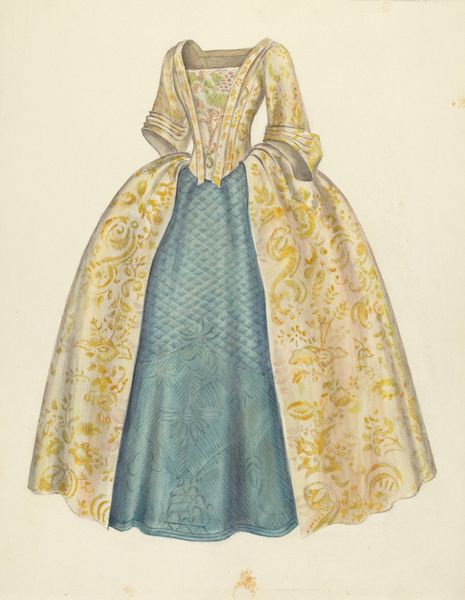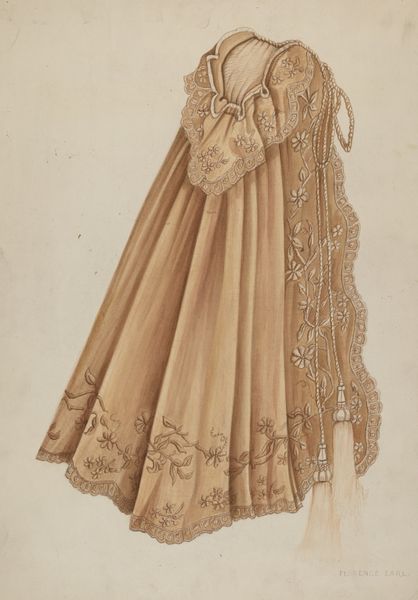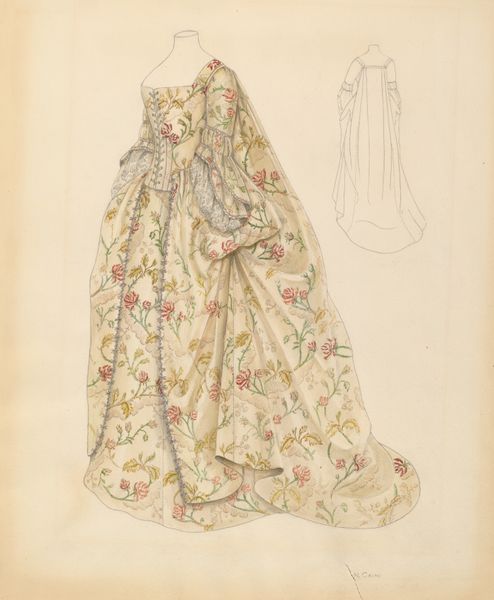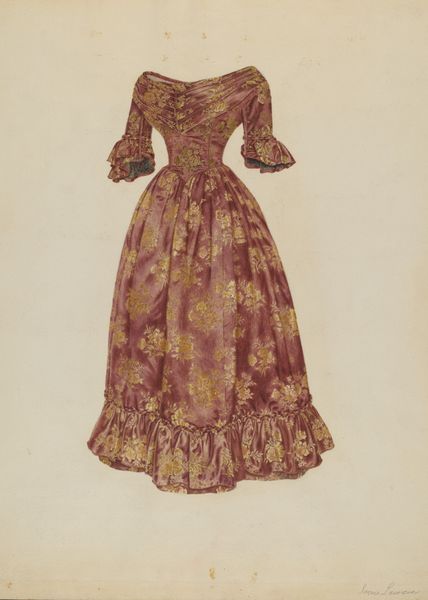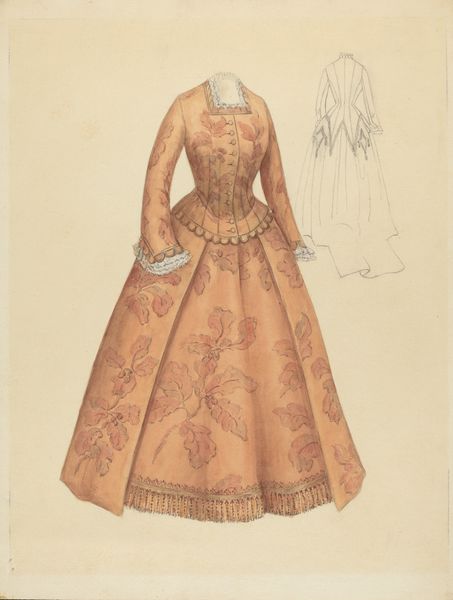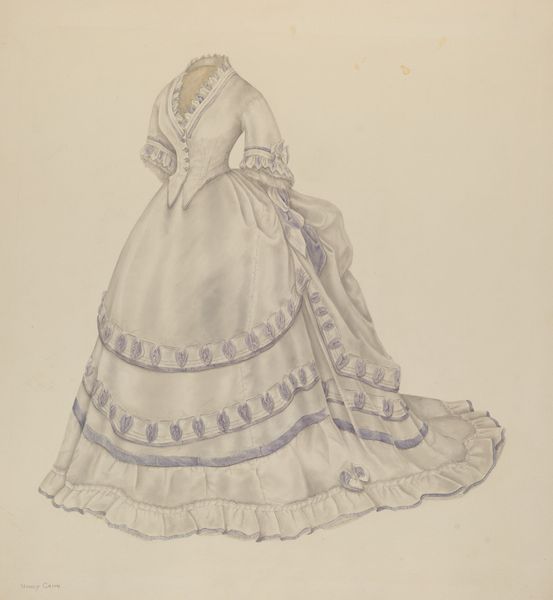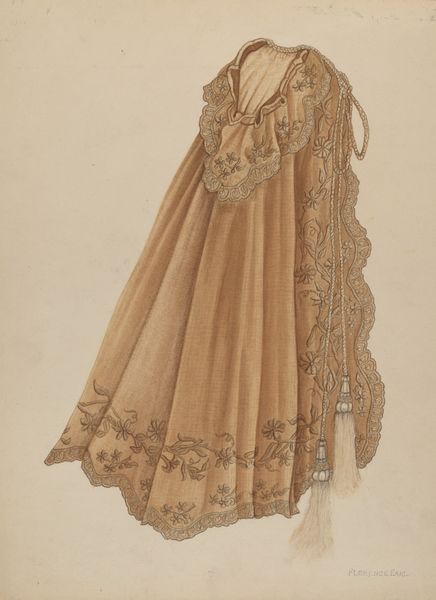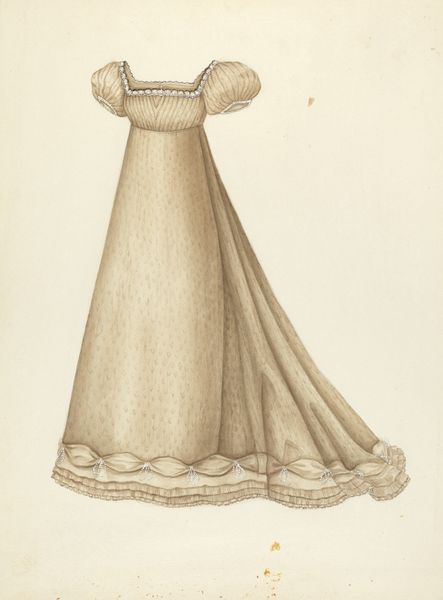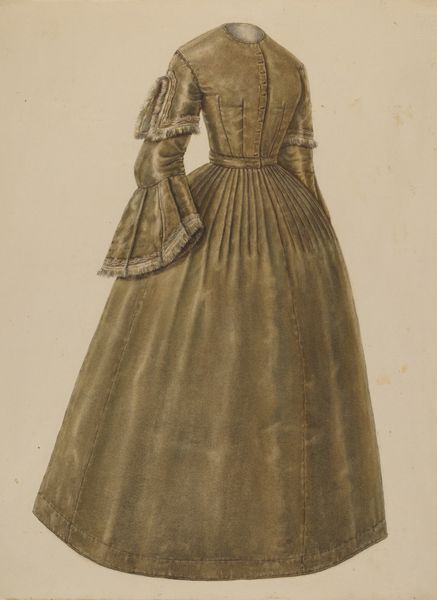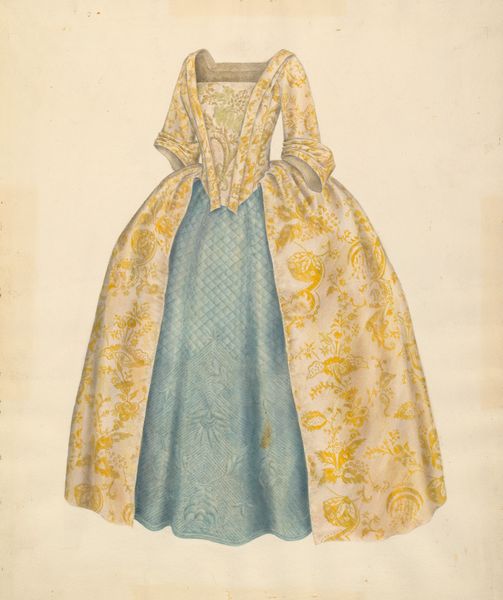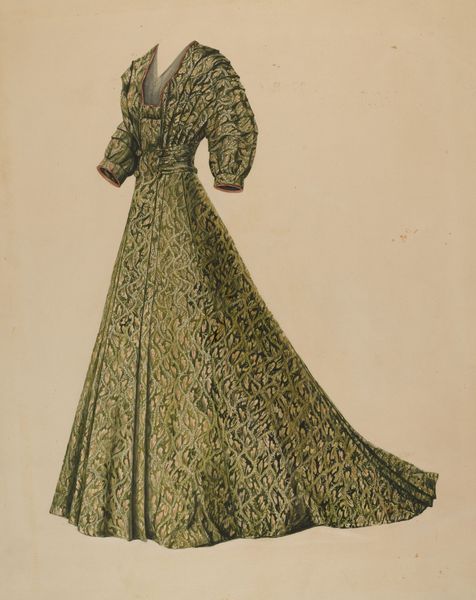
drawing, acrylic-paint
#
portrait
#
fashion design
#
drawing
#
underwear fashion design
#
fashion mockup
#
fashion and textile design
#
acrylic-paint
#
historical fashion
#
wearable design
#
traditional dress
#
clothing photo
#
academic-art
#
fashion sketch
#
clothing design
Dimensions: overall: 45.1 x 47.3 cm (17 3/4 x 18 5/8 in.) Original IAD Object: neck to waist: 14"; waist to hem: 41"; waist: 24"; sleeve: 23" long; circumference of skirt: 164"
Copyright: National Gallery of Art: CC0 1.0
Curator: This watercolor and acrylic piece, created around 1940 by Henry De Wolfe, is simply titled "Dress." The execution and muted color scheme lend it an understated elegance. Editor: My first impression is… longing. It evokes a bygone era, where appearances signaled privilege. It also projects such restraint. It seems almost sad. Curator: Interesting. Consider the careful composition. The dress, presented without a figure, is both present and absent, drawing our eye to the meticulous details of line and form. Note how the light falls, defining volume. Editor: Exactly! The missing figure heightens its symbolism for me. What woman was expected to fit into this mold? To uphold this standard of delicate beauty, but also what class was meant to wear this and to whose labor? Curator: Well, artistically speaking, observe how the muted palette—the gentle golds and browns—serves to enhance the texture of the dress itself. The fabric appears almost luminescent despite the lack of bright color, emphasizing the subtle variations in tone. Editor: But don’t you find it oppressive? This period fetishized particular ideals of beauty and femininity, and dresses like this—constricting, expensive, impractical—were powerful visual signifiers of status but demanded an even more powerful sense of subordination and of an often-unseen underclass that would facilitate it. Curator: Perhaps, but you can still admire the way that De Wolfe renders those signifiers in an almost hyper-realistic way. Note that the eye moves along a clear linear trajectory created by the button line and the folds of the fabric. Editor: For sure. By fixating on line and construction, De Wolfe preserves something concrete. This garment remains to challenge the viewer. As viewers, we must question how such material goods affect power dynamics. How have they been coded and, maybe, how do we work to subvert their cultural effect now? Curator: A potent closing statement. I find the piece formally striking; you have provided insight regarding its cultural significance. Editor: Precisely. The best artworks instigate meaningful conversation. Thank you.
Comments
No comments
Be the first to comment and join the conversation on the ultimate creative platform.
